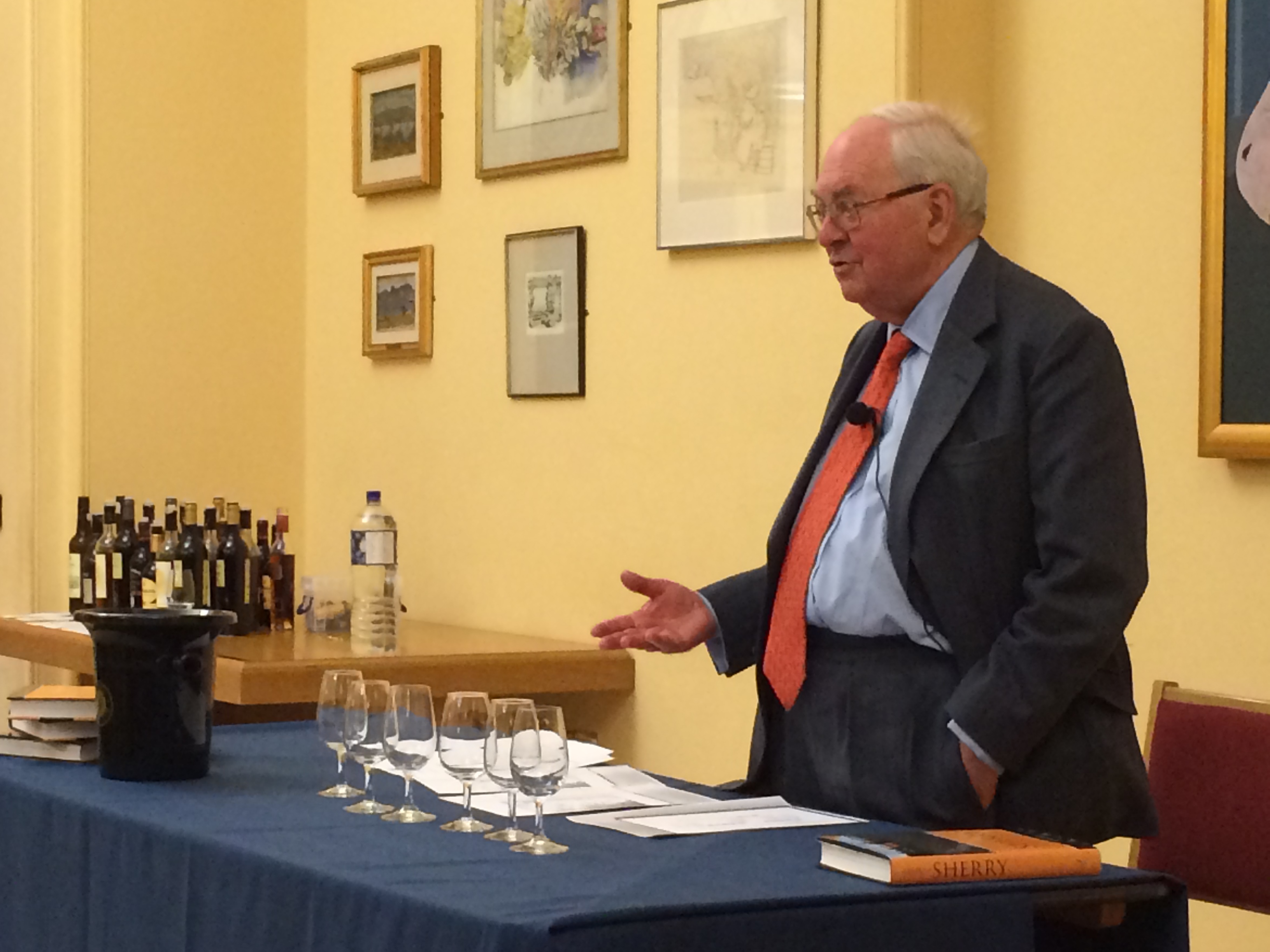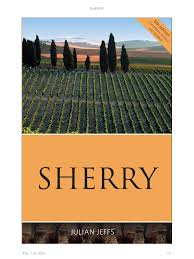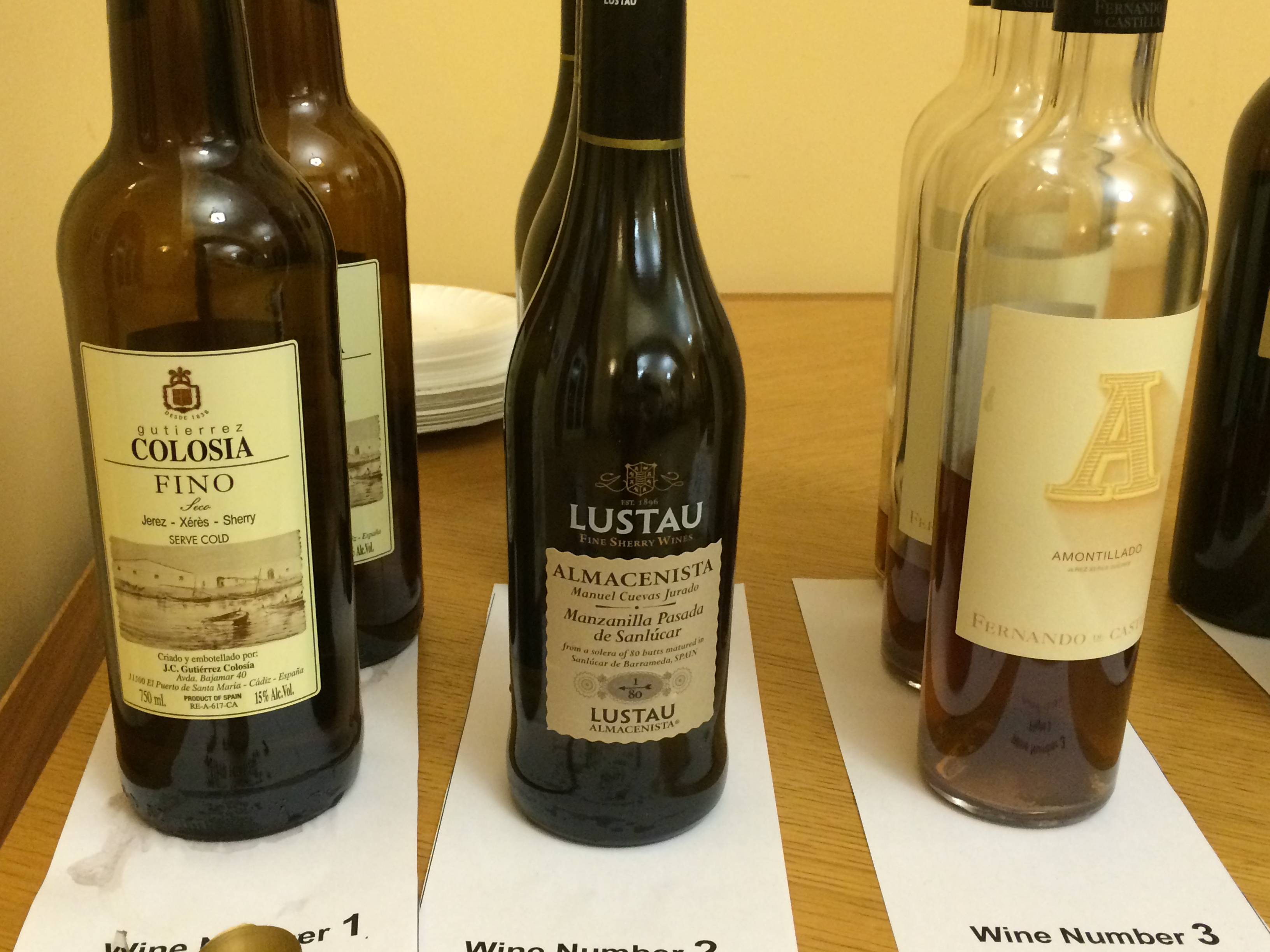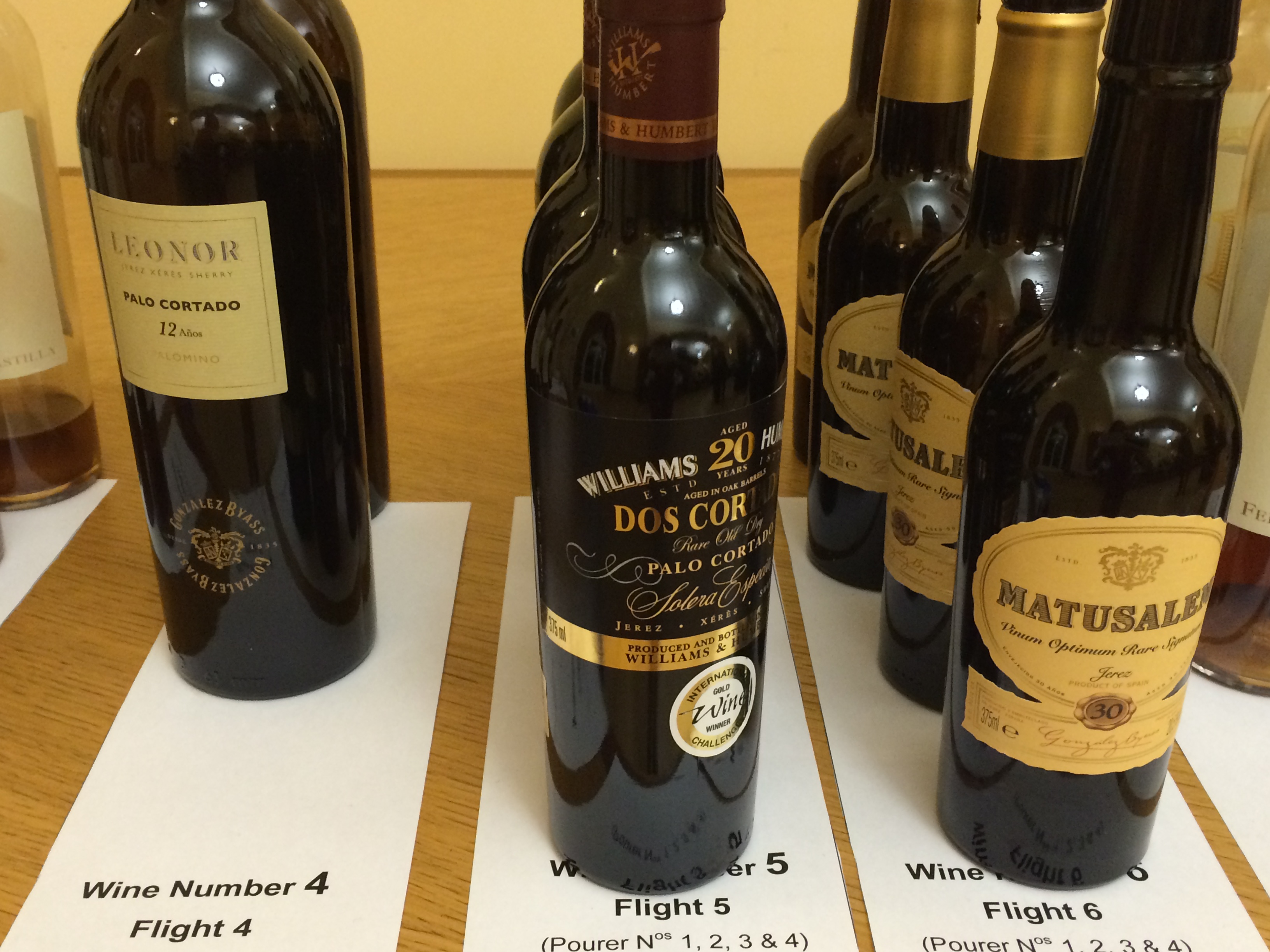 We had been looking forward to this tasting with the world’s authority on sherry – Julian Jeffs - for nearly two years!
We had been looking forward to this tasting with the world’s authority on sherry – Julian Jeffs - for nearly two years!
The Club last heard him speak when he stood in at our last Spanish wine tasting evening to give an impromptu and excellent insight into the wines from around Jerez while the invited speaker for the evening was stuck in traffic!
Julian Jeffs is author of the book “Sherry”, which he has now been writing on and off for sixty years or so, and he has the most engaging way of speaking.
When Julian was aged just 24, he went on a sea sick passenger boat from Alicante to Jerez and fell completely in love with the place. He was only supposed to stay there for three days, but ended up staying for eight months! One thing he noticed was that pretty much everything anyone had written about making sherry was wrong, and this inspired him to write a book on it himself telling the truth, the whole truth, and nothing but the truth.
The best vineyards for making sherry are found on albarthi (snow white) soil, which is chalky with bits of sea shells in it and is dazzling to look at in the sunshine. You find these vineyards within the so-called sherry triangle – the land within a triangle with corners marked by the towns of Jerez de la Frontera, Sanluca de Barrameda and El Puerto de Santa Maria.
The first wine we tasted was a Fino (Gutierrez Colosia Fino Puerto - £11.99 for 75cl). It was a good one - very light and fresh, and a perfect aperitif. You ought to have it chilled. Well aware of this, Julian recounted how he once tried to chill his bottle of Fino on a sunny day at the Spanish beach by burying it in the sand, only later to realise that he couldn’t find it again! Please let Julian know if you find it...
 The second wine we tried was a Manzanilla Pasada (Lustau Almacenista Manzanilla Pasada de Sanlucar - £19.99 for 50cl) which is a type of Fino sherry from around Sanluca de Barrameda, but one that has been aged for longer than a normal Fino or Manzanilla. The wine was more aromatic than the (unaged) Fino we had tried a moment ago, with notes of lemon zest, green apples and almonds.
The second wine we tried was a Manzanilla Pasada (Lustau Almacenista Manzanilla Pasada de Sanlucar - £19.99 for 50cl) which is a type of Fino sherry from around Sanluca de Barrameda, but one that has been aged for longer than a normal Fino or Manzanilla. The wine was more aromatic than the (unaged) Fino we had tried a moment ago, with notes of lemon zest, green apples and almonds.
We followed that with an Amontillado (Fernando de Castilla Antique Amontillado - £27.95 for 50cl). This, according to Julian, is more something you can drink in front of the fireplace. It tasted warm and rich, with a fantastically complex nose – toffee, hazlenuts, citrus fruits, dried fruits and spice. The richness and relatively high alcohol was balanced by a refreshing acidity, and the finish was long.
Amontillado sherries are different to Fino (or Manzanilla) sherries. True Amontillados (as opposed to commercial Amontillados) start out as Finos being biologically aged under a flor (a layer of yeast which forms on top of the wine in barrel). However, after a period of seven years or so in the sherry butt the flor starts to die away. The wine is fortified a little more at this stage which makes it too strong for any flor to grow at all, and then it is aged further but now under the influence of oxygen. The oxidative aging gives the wines a darker colour, and creates the nutty and toffee type flavours.
 The fourth wine was a Palo Cortado (Gonzales Byas Leonor Palo Cortado). At only £12.99 for a 75cl bottle this is amazing value, and Julian confessed that he “knocks it back in huge quantities”! A Palo Cortado is a style if sherry which used to occur naturally by chance, but more recently can also be made, now the science behind the wine is better understood. It occurs naturally when a wine that has been selected by the wine maker to be a Fino sherry fails to sustain its flor. The result is similar to an Amontillado. The winemaker can help make this happen by choosing the Finos in barrel that have the fullest body and maturing those ones as Amontillados. The wine we tried was similar to the Amontillado we had tried previously but lacked the intensity and complexity of it, and the palate was also much less precise than the third wine.
The fourth wine was a Palo Cortado (Gonzales Byas Leonor Palo Cortado). At only £12.99 for a 75cl bottle this is amazing value, and Julian confessed that he “knocks it back in huge quantities”! A Palo Cortado is a style if sherry which used to occur naturally by chance, but more recently can also be made, now the science behind the wine is better understood. It occurs naturally when a wine that has been selected by the wine maker to be a Fino sherry fails to sustain its flor. The result is similar to an Amontillado. The winemaker can help make this happen by choosing the Finos in barrel that have the fullest body and maturing those ones as Amontillados. The wine we tried was similar to the Amontillado we had tried previously but lacked the intensity and complexity of it, and the palate was also much less precise than the third wine.
The fifth wine we tried was a better example of a Palo Cortado (Williams & Humbert 20 year old Palo Cortado - £15.99 for half a normal sized bottle) had a delightful nose. Julian suggested that if you sit down and simply smell it for half an hour (rather than drink it) then it can work out very economically! Even though it was in fact dry, it seemed to taste slightly sweet due to the intensely sweet fruit flavours on the palate. The nose was complex, and the palate was rich and intense, again with notes of spices and nuts mingling with the fruit flavours. Very nice!
We then tasted an Oloroso (Gonzales Byass Matusalem 30 year old Dolce Olorosso - £19.95 for half a normal sized bottle). This was the first sweet wine of the evening. It is made by enriching dry Oloroso sherry with 25% sweet Pedro Ximenez. Oloroso sherries are not aged under a flor (like a Fino or Manzanilla) and so they do not have the classic note of acetaldehyde. This wine was lovely. Opulent but not cloying on the palate, with a range of flavours – fruit cake, figs, orange, cinnamon – coming through, and a long finish. Julian said “Matusalem to my mind is the finest wine to drink with Stilton cheese”, and so lots of members put that to the test later with some Stilton that Peter had brought along.
The penultimate wine we tried was an unsweetened Oloroso (Fernando de Castilla Antique Oloroso - £26.95 for half a bottle). This wine was made by a Norwegian chap at a small, independent sherry house. It was complex and well balanced, exhibiting notes of walnut, spices and orange peel. Lovely!
The final wine of the tasting was a Pedro Ximenez (Gonzales Byass Nectar Pedro Ximenez - £14.99). Pedro Ximenez (PX) is the finest desert wine of Jerez, produced from grapes that have been left out in the sun to dry out. Very dark in colour, it is quite gloopy stuff and is extremely sweet. It is delicious with ice-cream. You can buy some very old, complex and intense PX’s. This example wasn’t one of those, but it wasn’t bad.
Sherry may remain an under-appreciated wine. However, Julian’s passion for it is great to hear, and he is a real asset to the sherry industry. The good news is that while it remains out of favour you can get some truly lovely wines for some bargain prices!
JW May 2015